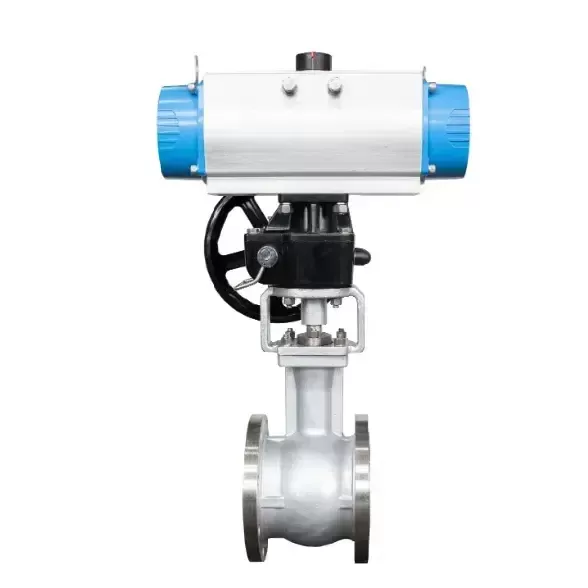Notifications

6 minutes, 29 seconds
-108 Views 0 Comments 0 Likes 0 Reviews

We are a leading control valve manufacturer in China, delivering high-quality valves and control actuators designed to meet a wide range of industrial applications.
Pneumatic three-way control valves are vital components in modern industrial systems, designed to regulate the flow of fluids such as water, steam, or gas. Engineered for either mixing or diverting applications, these valves offer exceptional versatility and are widely utilized in systems requiring precise thermal management—such as heat exchangers and HVAC systems.
Known for their reliability, precision, and efficiency, pneumatic three-way control valves are equipped with a compact, high-output diaphragm actuator. This multi-spring mechanism simplifies the operating structure while delivering powerful and consistent performance, even under high differential pressure conditions. Whether managing the direction or combination of fluid streams, these valves are a dependable choice across industries requiring accurate and responsive flow control.
Hysteresis Error:
Without positioner: Within 3% F.S.
With positioner: Within 1% F.S.
Linearity:
Without positioner: Within ±5% F.S.
With positioner: Within ±1% F.S.
These specifications underscore the valve’s high precision—especially when paired with a positioner—making it well-suited for applications where accuracy and consistency are critical.
These valves function by using compressed air to actuate internal mechanisms that regulate flow direction. Typically comprising three ports (either one inlet and two outlets, or the reverse), the valve can be configured for:
Diverting: Routing fluid from a single inlet to one of two outlets.
Mixing: Combining two incoming flows into one outlet.
The diaphragm actuator, powered by a pneumatic signal, translates air pressure into mechanical motion to position the internal plug. This allows for smooth, accurate control even under demanding operating pressures.
In heat exchanger systems, for example, the valve may control the flow of heating or cooling media to maintain target temperatures. It can redirect hot water to a heating system or bypass it toward a cooling system, depending on operational needs.
Designed for a wide array of applications involving water, steam, and gas. The dual functionality—diverting or mixing—makes these valves highly adaptable.
Exceptionally accurate with hysteresis error as low as 1% F.S. and linearity within ±1% F.S. when used with a positioner.
Built for heavy-duty applications and capable of withstanding high differential pressures and harsh environments.
A space-saving diaphragm actuator ensures easier installation and maintenance.
By improving fluid regulation, these valves help optimize energy use in systems like HVAC and process cooling.
The simplified internal structure reduces wear, lowers maintenance requirements, and extends operational life.
Maintaining pneumatic three-way control valves ensures optimal performance and minimizes downtime. Best practices include:
Routine Inspections: Check for signs of wear, corrosion, or leaks.
Lubrication: Apply appropriate lubrication to moving parts to reduce friction.
Cleaning: Remove debris or scale buildup, especially in water and steam systems.
Calibration: Regular calibration ensures continued control accuracy.
Leak Detection: Identify and address air or fluid leaks promptly.
Part Replacement: Replace worn diaphragms, seals, or other components as needed.
Function: One inlet, one outlet. Used for on/off or throttling flow in a single direction.
Applications: Simple flow control systems.
Pros: Cost-effective, easy to install, minimal complexity.
Cons: Cannot divert or mix flows.
Function: One inlet and two outlets (or vice versa). Used to mix or divert flow between paths.
Applications: Ideal for heat exchangers, temperature regulation, and multi-process systems.
Pros: Versatile, energy-efficient, precise.
Cons: More complex, higher initial cost.
Which Should You Choose?
Choose a two-way valve for straightforward flow regulation. Opt for a three-way valve if your system requires mixing, diverting, or complex thermal control.
HVAC Systems: Regulate heating or cooling media to maintain desired ambient temperatures.
Heat Exchangers: Control fluid flow to manage temperature consistency.
Industrial Processes: Mix or divert process fluids for optimized production control.
Water Treatment: Direct the flow of water or chemicals for efficient treatment cycles.
Steam Systems: Manage steam distribution in heating and power systems.
Pneumatic three-way control valves deliver unmatched reliability, precision, and adaptability for industrial flow control. Whether managing heating systems, fluid mixing, or critical thermal processes, these valves provide the performance required to meet modern industrial demands.
Understanding their operation, benefits, and maintenance needs ensures that you choose the right valve for your system and maintain it for long-term reliability. When selected and maintained properly, pneumatic three-way valves offer outstanding value and performance—making them an indispensable component in today's industrial infrastructure.Know more about Google SEO Directory

